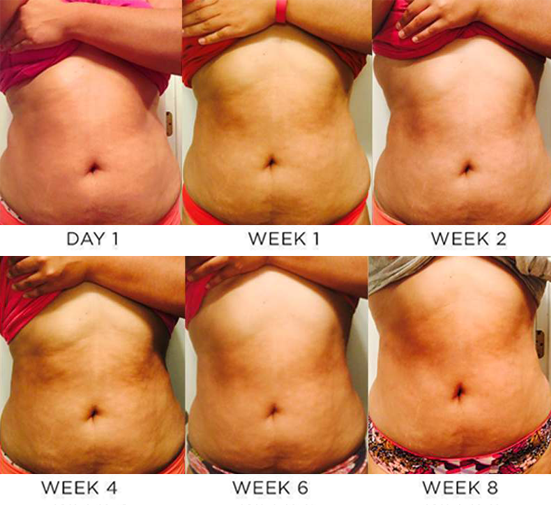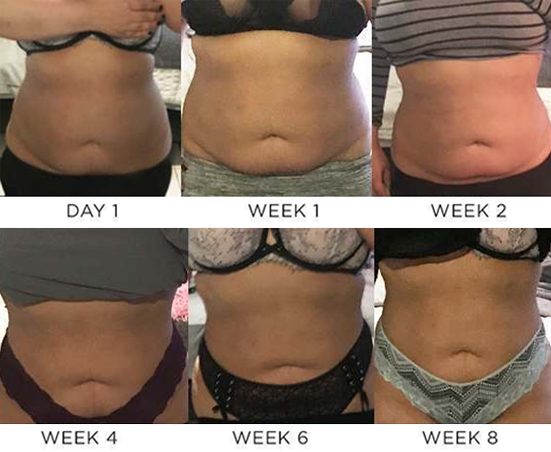Have you been trying to lose weight, but no matter what you do, the weight still doesn’t go away? Have you ever wondered if you qualify for weight loss surgery? Our article below will answer the most frequently asked questions about this issue.

WHAT IS WEIGHT LOSS SURGERY?
Weight loss surgery, also known as bariatric surgery, is a medical procedure to help people lose weight when other methods haven’t worked. During the surgery, a doctor makes changes to your stomach or intestines to limit the amount of food you can eat or the nutrients your body absorbs. This can lead to significant weight loss over time. It’s usually considered when a person has a high Body Mass Index (BMI) or obesity-related health issues. The surgery is just one part of a bigger plan that includes lifestyle changes like eating healthier and being more active. It’s important to talk to a doctor to see if weight loss surgery is the right option for you.
WHAT ARE THE BENEFITS OF WEIGHT LOSS SURGERY?
Weight loss surgery, or bariatric surgery, can offer several benefits for individuals struggling with obesity. Some of the key advantages include:
- Effective Weight Loss: Bariatric surgery can lead to significant and sustained weight loss, helping individuals achieve a healthier weight and reduce obesity-related health risks.
- Improvement in Health Conditions: Many obesity-related health problems, such as diabetes, high blood pressure, and sleep apnea, may improve or even resolve after weight loss surgery.
- Enhanced Quality of Life: Losing excess weight can improve overall well-being, increase energy levels, and enhance mobility, leading to a better quality of life.
- Long-term Results: Unlike some other weight loss methods, bariatric surgery often provides long-term results, helping individuals maintain a healthier weight over time.
- Reduction in Medication Dependence: As weight decreases and health improves, the need for medications to manage obesity-related conditions may decrease or be eliminated.
- Positive Impact on Mental Health: Achieving weight loss goals can boost self-esteem and mental well-being, reducing the risk of depression and anxiety associated with obesity.
- Increased Lifespan: Weight loss surgery has been linked to an increased lifespan, particularly when it comes to reducing the risk of obesity-related diseases and complications.
WHAT CONDITIONS MUST BE MET FOR BARIATRIC SURGERY?
- Have a high Body Mass Index (BMI) of 40 or more, or a BMI greater than 35 along with certain health issues related to obesity, like diabetes, high blood pressure, high cholesterol, sleep apnea, joint problems, or other obesity-related concerns.
- Be at least 18 years old.
- Have already tried other methods for losing weight, like dieting, exercise, or supervised weight loss programs.
- Be committed to avoiding tobacco and illegal substances (recreational drugs).
- Have a supportive network of friends and family.
- Be committed to adopting a healthier lifestyle, including better eating habits and regular physical activity.
- Commit to follow-up appointments with the bariatric program after surgery to achieve the best results together.
HOW TO CALCULATE BMI?
To calculate BMI (Body Mass Index), follow these steps:
MEASURE YOUR WEIGHT
Weigh yourself in kilograms (kg) or pounds (lb).
MEASURE YOUR HEIGHT
Measure your height in meters (m) or feet (ft).
USE THE FORMULA
Calculate BMI using the formula: BMI = weight (kg) / (height (m))^2
If using pounds and feet, the formula is: BMI = (weight (lb) / (height (ft))^2) * 703
INTERPRET THE RESULT
A BMI below 18.5 is considered underweight.
A BMI between 18.5 and 24.9 is within the normal range.
A BMI between 25 and 29.9 indicates overweight.
A BMI of 30 or higher suggests obesity.
WHO IS NOT A CANDIDATE FOR WEIGHT LOSS SURGERY?
If you are younger than 18 years of age, pregnant or planning to be pregnant, have had few other attempts at weight loss, or if you won’t agree to follow all the dietary rules before and after the surgery, then you will be disqualified.
HOW MUCH WEIGHT DO YOU NEED TO LOSE TO QUALIFY FOR WEIGHT LOSS SURGERY?
Typically, as a general guideline, it may be necessary for you to achieve a weight loss of 5 to 10 percent of your total body weight before undergoing weight loss surgery. This preparatory weight loss is often recommended to optimize the safety and effectiveness of the surgical procedure. Your healthcare provider will provide specific guidance tailored to your individual health and circumstances to ensure the best possible outcome from the surgery.
WHAT IS THE SAFEST WEIGHT LOSS SURGERY?
After looking at all the good things and possible problems with weight loss surgery, we can say that Vertical Sleeve Gastrectomy is the safest one. This surgery makes your stomach smaller, so you eat less. But, like most surgeries, there’s a chance of side effects and complications.
WHAT IS THE LOWEST WEIGHT FOR WEIGHT LOSS SURGERY?
There’s no specific weight requirement for qualifying for gastric sleeve surgery or other bariatric procedures. However, your doctor will check if you’ve tried to lose weight through diet and exercise and are facing difficulties in shedding weight on your own.
WILL SKIN TIGHTEN UP AFTER WEIGHT LOSS?
Often, people confuse loose skin with extra fat, which tends to be soft and jiggly. If you can pinch more than an inch of skin between your fingers, you likely have more fat to lose before your skin tightens. It’s important to note that your skin won’t retract until the excess fat is gone.
WHAT IS THE LEAST PAINFUL WEIGHT LOSS SURGERY?
Laparoscopic surgery poses fewer risks than open surgery and can result in less pain and scarring. Recovery time is often quicker with laparoscopic surgery. However, for specific individuals, open surgery—a procedure with a single, large cut in the abdomen—might be a more suitable option.
DOES EVERYONE HAVE LOOSE SKIN AFTER BARIATRIC SURGERY?
Not everyone who undergoes bariatric surgery will experience loose skin, as the likelihood of loose skin depends on various factors such as age, genetics, the amount of weight lost, and how quickly the weight loss occurs. Typically, individuals who lose a significant amount of weight, especially in a short period, are more prone to loose skin. Bariatric surgery often leads to substantial weight loss, which can result in the reduction of fat tissue. However, the skin may not always contract and tighten accordingly, leading to loose or sagging skin.
HOW MANY PEOPLE FAIL WEIGHT LOSS SURGERY?
Bariatric surgery failure is described as achieving or maintaining less than 50% of excess weight loss (EWL) within 18 to 24 months or having a body mass index (BMI) greater than 35. The reported failure rate for RYGB is around 15%, with a long-term failure rate ranging from 20% to 35% and a revision rate of 4.5%.
WHICH WEIGHT LOSS SURGERY HAS THE HIGHEST SUCCESS RATE?
- Gastric bypass surgery: 60-70%
- Sleeve gastrectomy: 50-60%
- Gastric band surgery: 50%
CAN PREGNANT OR LACTATING WOMEN HAVE SURGERY CURRENTLY?
During pregnancy or while nursing, attempting weight loss is not advisable. Instead, focus on maintaining a healthy and well-balanced diet, ensuring sufficient sleep, staying hydrated, and engaging in moderate physical activity. Prioritizing these aspects will not only provide a positive foundation for your baby but also enhance your overall well-being. These practices will contribute to better preparation in case you consider pursuing a weight loss procedure in the future.
DO YOU HAVE ANY MEDICAL CONDITIONS RESULTING FROM YOUR WEIGHT?
If you meet the other eligibility criteria, you could still qualify for an ESG even if your BMI is on the borderline. This applies particularly if you are experiencing weight-related conditions like high blood pressure, type 2 diabetes, sleep apnea, and so forth.
CAN YOU COMMIT TO MAKING LIFESTYLE CHANGES?
If you are ready to change unhealthy behaviors for positive lifestyle habits, including dietary choices and physical activity levels, with the support of a dedicated team of experts, you may find yourself very fit and ready for weight loss surgery.
Reaching out to qualified professionals can help you better understand why you should avoid consuming junk food, excessive soft drinks, processed foods, and leading a sedentary lifestyle. Furthermore, they can guide you through nutrition, exercise and menu planning, providing practical strategies that can assist you in achieving your weight loss goals.
CONCLUSION
In conclusion, determining eligibility for weight loss surgery is a multifaceted process that involves various factors such as body mass index (BMI), the presence of weight-related conditions, and a commitment to lifestyle changes. If you have been contemplating whether you qualify for weight loss surgery, it is crucial to consult with a healthcare professional. Seeking guidance from a qualified medical team will not only provide personalized insights into your eligibility but also offer support and information essential for making informed decisions about your weight loss journey. Remember, each individual’s situation is unique, and a comprehensive evaluation by healthcare experts will help tailor an approach that aligns with your specific needs and health goals.






